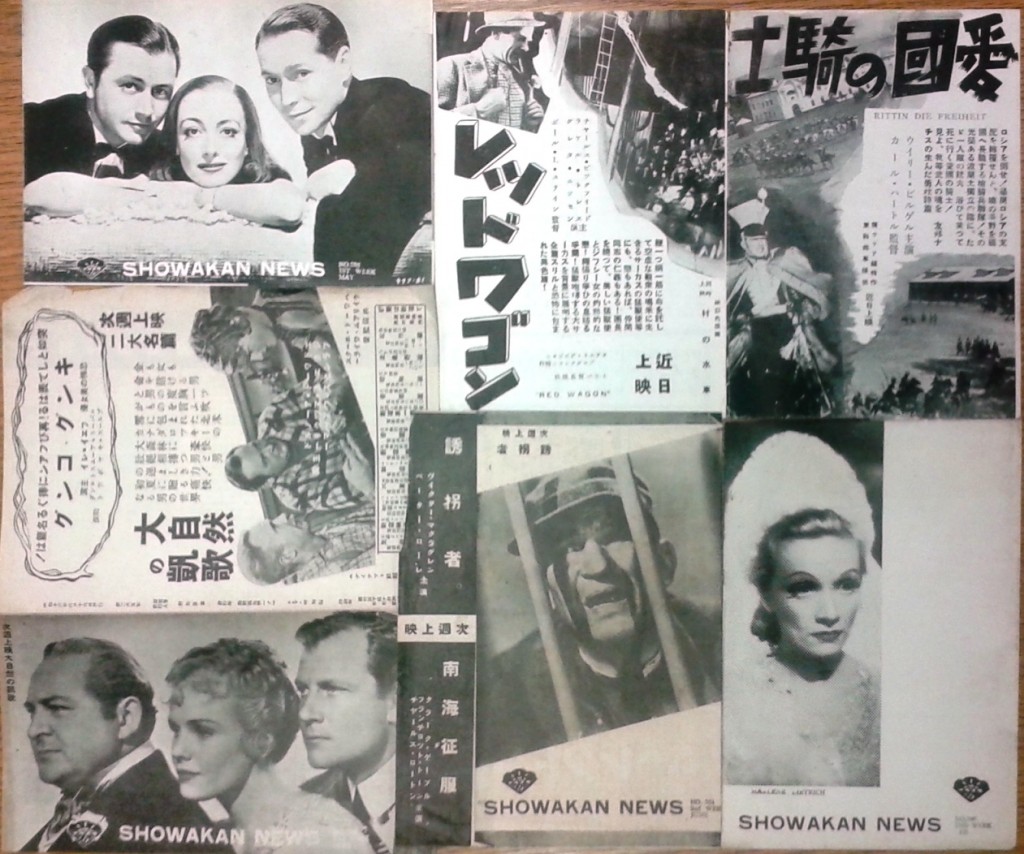
The initial style of the film handbill, or flier, was seen in Japan before World War II. There were a limited number of movie theaters in Japan at this period, and films were promoted by theaters themselves. The pre-war handbills in the Makino Collection were printed on coarse paper and produced by the movie theaters, unlike the current Western style. The design uses traditional Japanese writing styles, such as inscribing phrases from right to left.
The original style of film programs began to be distributed as a free-of-charge weekly bulletin, which were published by film theaters just like film fliers. There was no boundary between flier and program at this point.
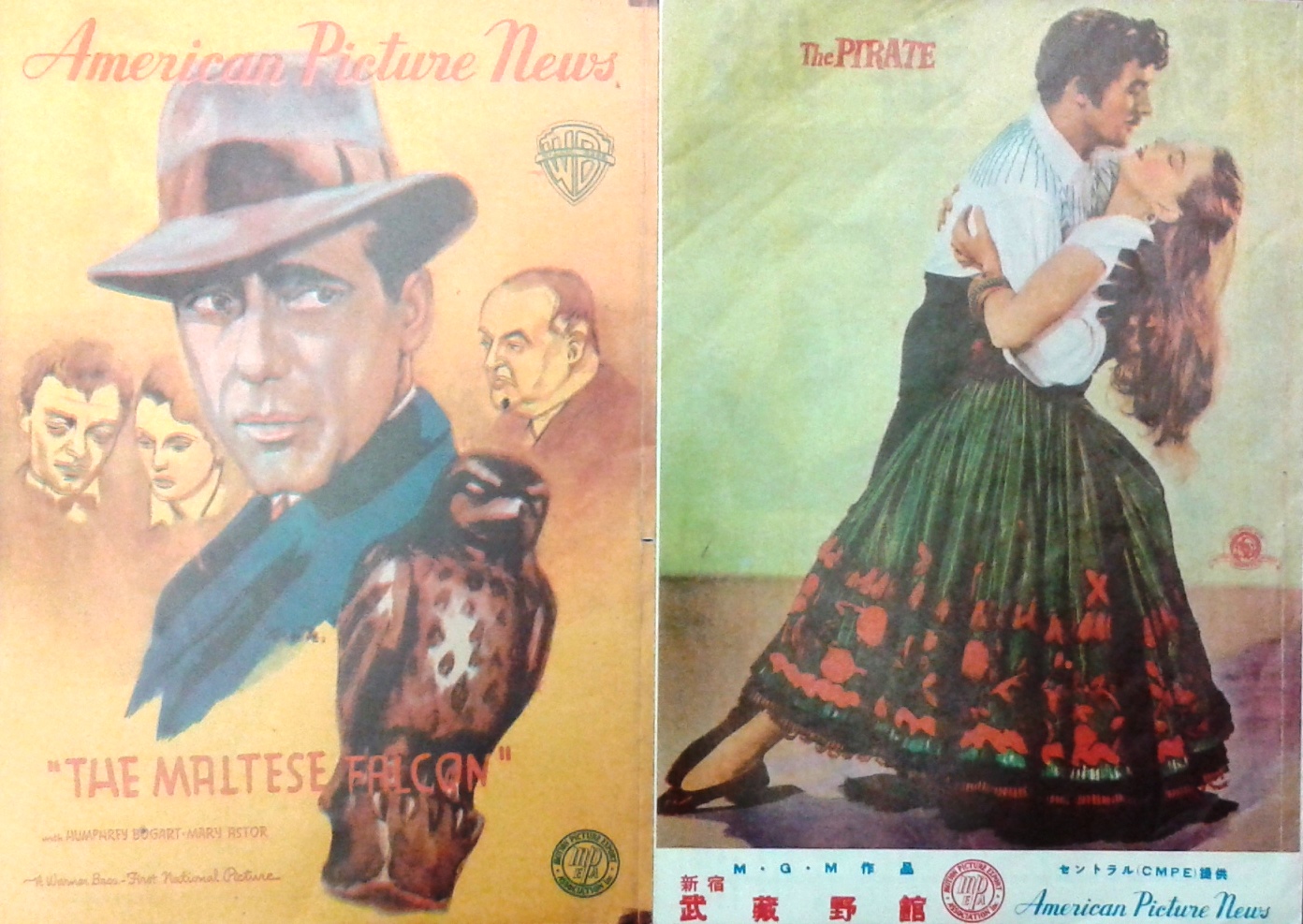
After the war, starting from Subaruza in the Yῡrakuchō neighborhood of Tokyo, the American style of roadshow theatrical release permeated all of Japan, which was led by the Central Motion Picture Exchange (CMPE). CMPE published and sold their own film programs for their distributed Hollywood films during the occupation period. Meanwhile, the number of theaters dramatically increased, reaching its peak in 1960.

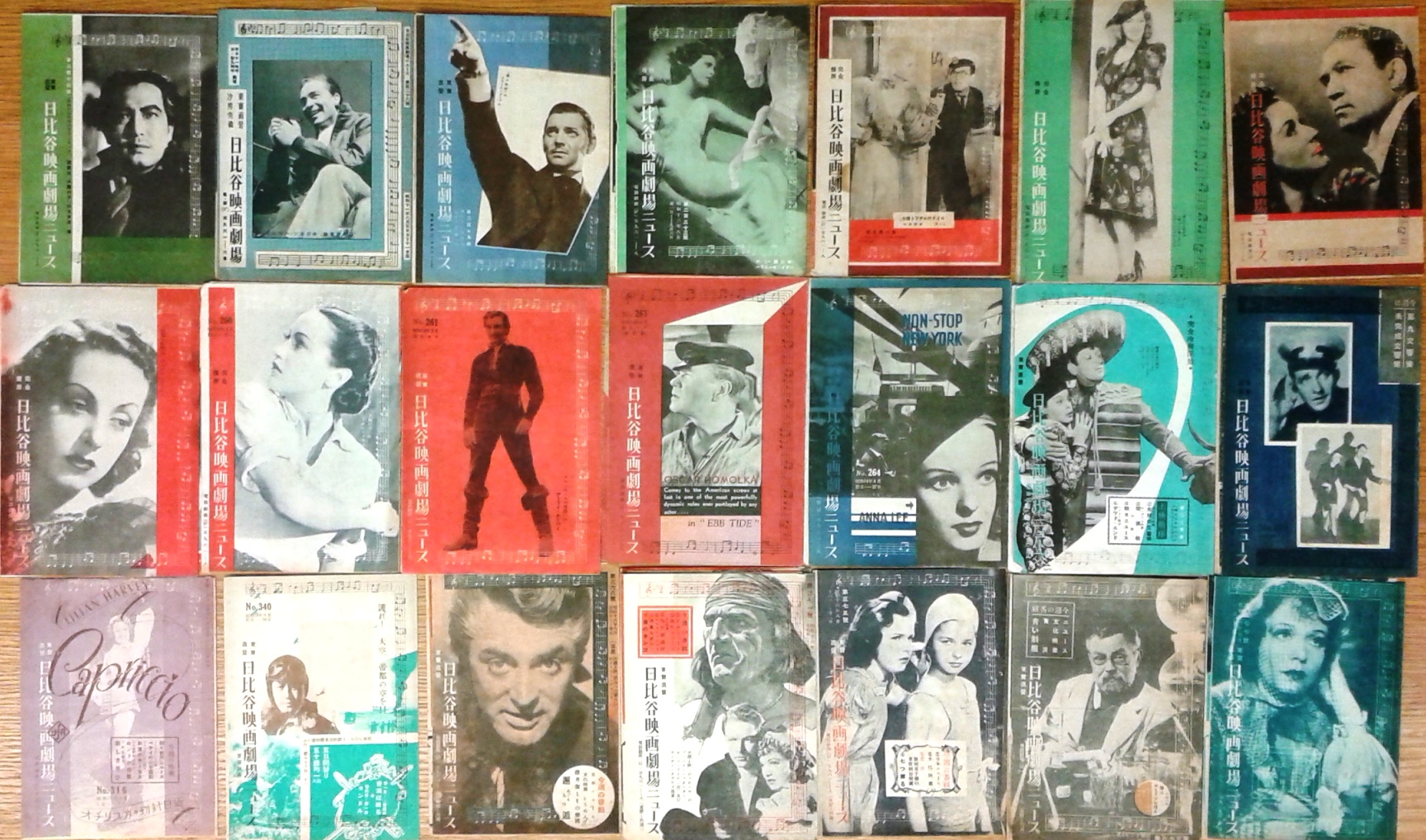

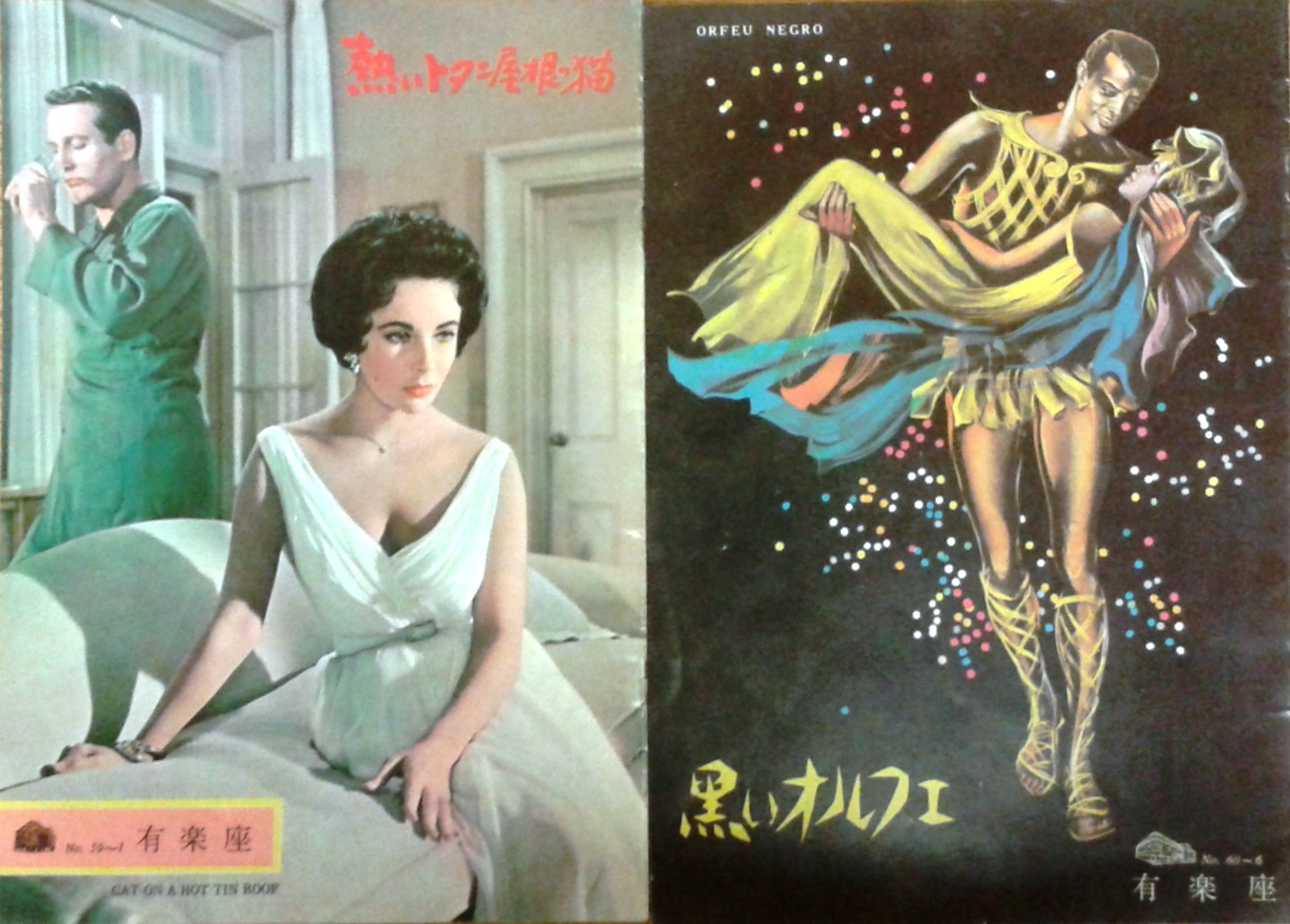
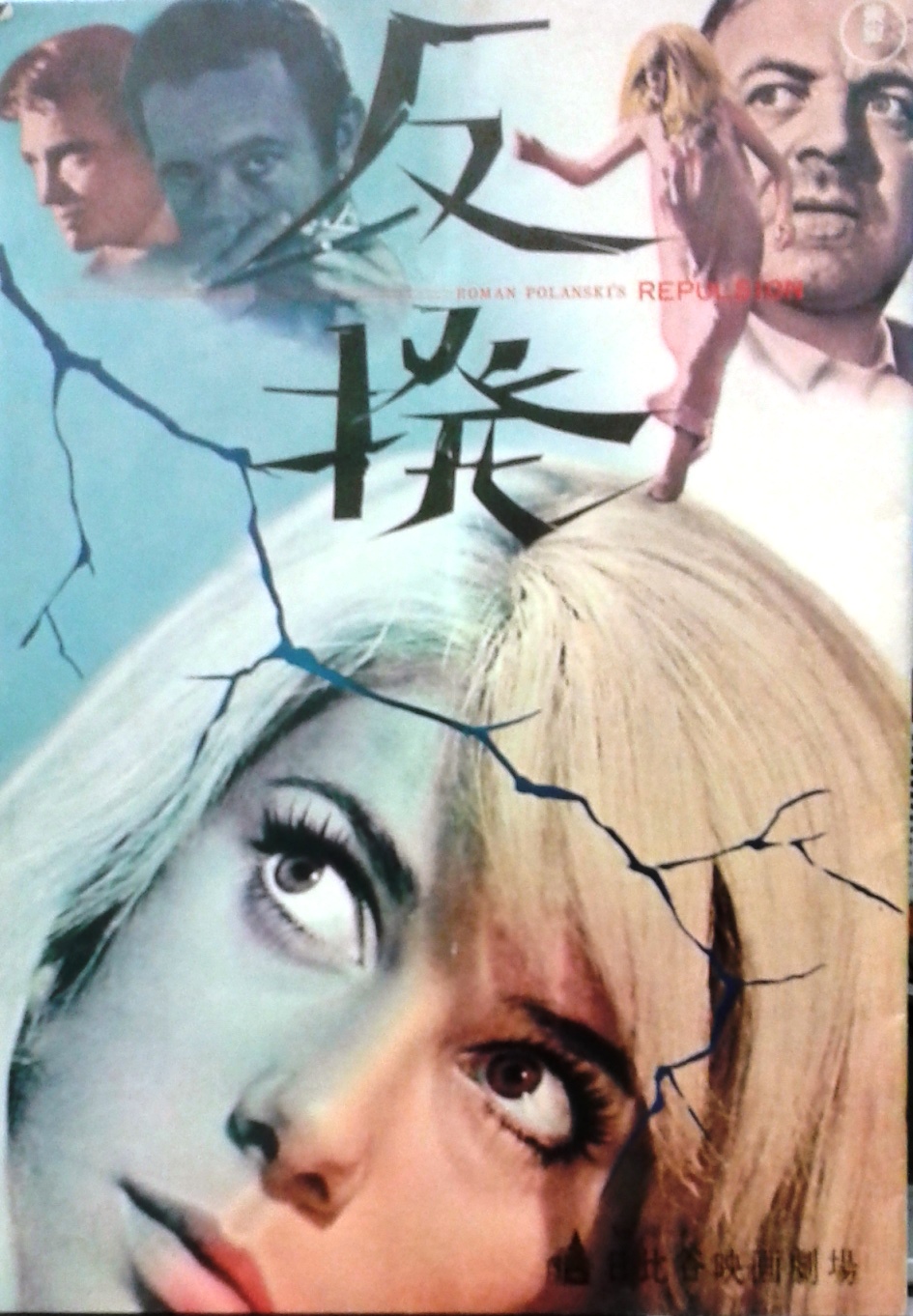
Following this movement, film’s promotional center moved from movie theaters to film distribution companies. Accordingly, the styles of fliers and programs were completely renovated, and the contents and design of each flier for each film became uniform all over Japan. The modern programs became gorgeous, with thick, quality paper and more pages in multiple colors; theater goers now had to pay for them. On the other hand, the modern film fliers are usually in the “B5” size, which is slightly smaller than letter-size paper, with a color surface and a bi-color print on the backside.
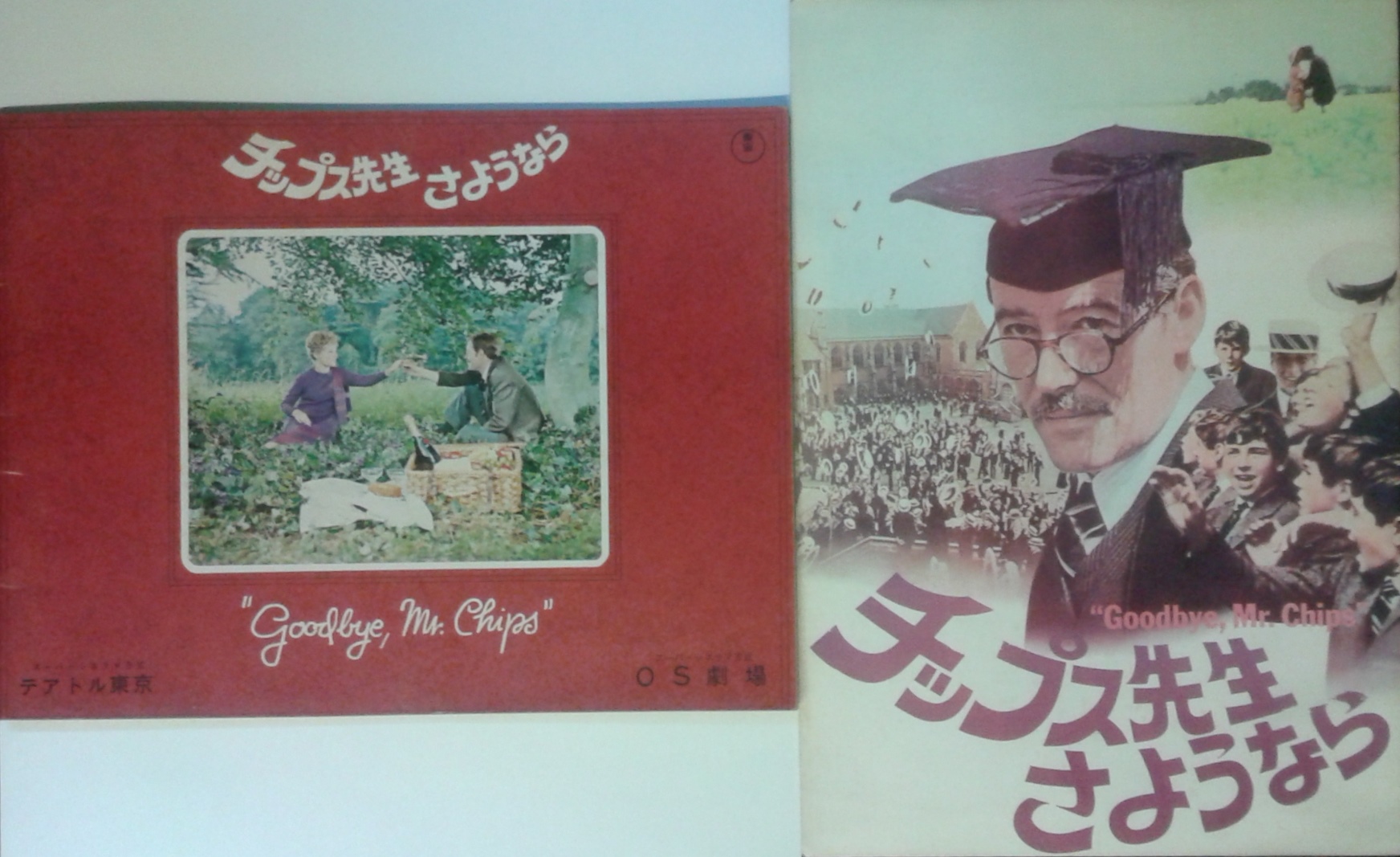
Interestingly, during this transitional period, around 1945 through the 1960’s, until the current uniform style became pervasive, a single film would generate film programs in several different designs. For example, some roadshow theaters created original film programs with the theater name on it, such as Tōhō movie theaters like Yῡrakuza and Hibiya Eiga Gekijō, and Shōchiku movie theaters like Tōgeki and Shōchiku Central, while second-run theaters published programs for regular movie theaters.
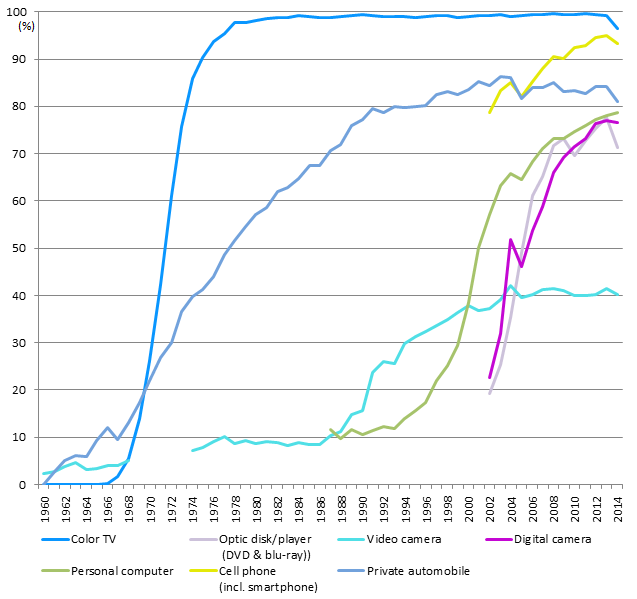
With the post-war economic growth, people started seeking convenient family leisure; at that period of time, there were not as many entertainments and not many options for people to appreciate films at home as there are today. Films were considered a primary and convenient leisure-time activity, and film ephemera pleased the eyes of the audience members who purchased and brought them back to their homes. Meanwhile, collecting film ephemera became a popular hobby in Japan. It is said that the film flier/program culture flourished among general collectors most between the 1960’s and 1980’s, following the dramatic increase of film theaters, and was most appreciated in the 1960’s.
As time has passed, the promotional styles have changed gradually; people’s lifestyles have become affluent and have diversified. The advent of digital media and global networks, including the internet, and continued development and widely pervasive electronic devices have dramatically changed the method of film distribution and promotion. Now people access handy and timely information from social media via smartphone and tablet. The film distribution channels have also diversified.
However, the vibrant print culture still exists, and the collecting value has gone up due to the lower number of programs and fliers. After the release date, film ephemera accumulate value over a long period of time. Nowadays in Japan, retailers specializing in film ephemera can be seen on the internet as well as in listings at some major auctions.
Lastly, the Makino Collection includes the special publications from a film’s release. The items are being treated as books, not as archival materials, and the data will be available through CLIO, following the cataloging process. More of them will be available on library shelves to check out or to recall from off-site. The project cataloger for the Makino Collection has been adding new data to CLIO every day; therefore, the results should increase over time. Please check them out as well if you are interested.